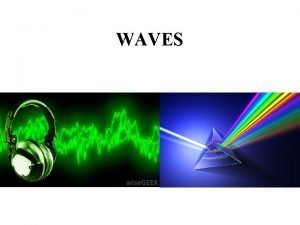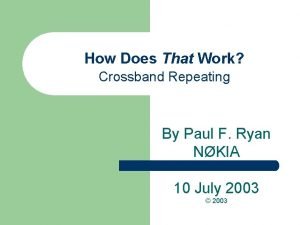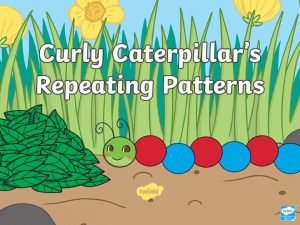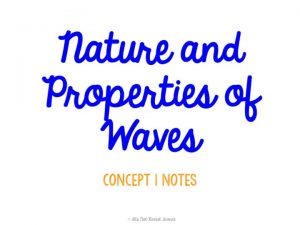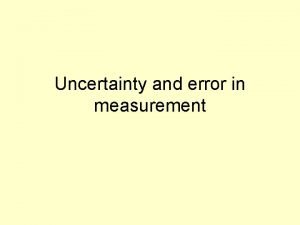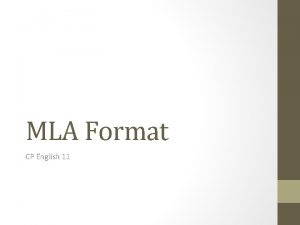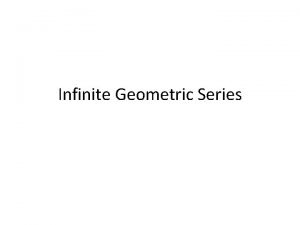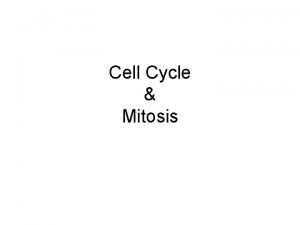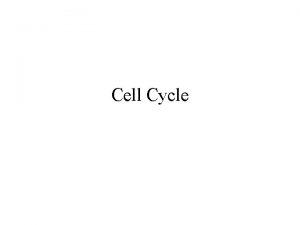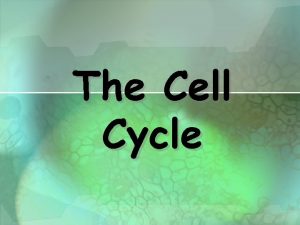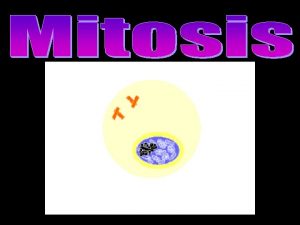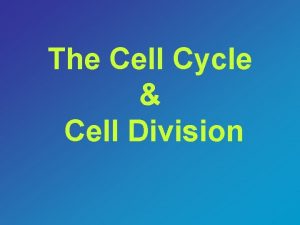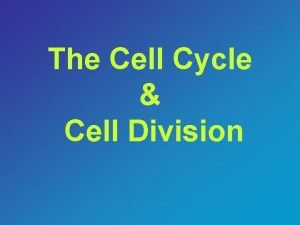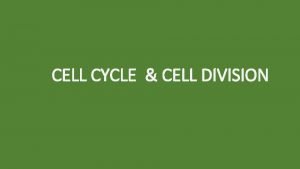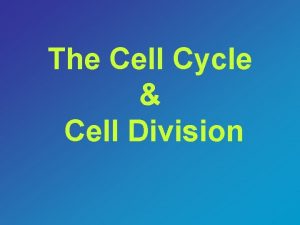Cell Cycle The Cell Cycle is the repeating

















- Slides: 17

Cell Cycle The Cell Cycle is the repeating process of growth and division for eukaryotic cells. n The Cell Cycle is easily broken down into five simple phases. n 90% of a cell’s life is spent in the first three phases that are collectively called interphase. n

Phases of the Cell Cycle 1 st Growth (G 1) Phase n Synthesis (S) Phase n 2 nd Growth (G 2) Phase n Mitosis n Cytokinesis n *G 1, S, & G 2 are known together as interphase

Cell Cycle

Phases of the Cell Cycle G 1 Phase- cell grows rapidly and carries out routine functions. If a cell is not dividing it is in G 1. n Synthesis- A cell’s DNA is copied. Chromosomes consisting of two chromatids attached at the centromere are formed. n G 2 - preparations are made for the nucleus to divide. n

Phases of the Cell Cycle Mitosis- the phase in which the nucleus of a cell is divided into two identical nuclei. n Cytokinesis- The division of the cytoplasm. n

Control of the Cell Cycle n Control of the Cell Cycle is maintained by three checkpoints. Each checkpoint has proteins that regulate the cell cycle. G 1 checkpoint: the checkpoint will regulate if the cell is healthy and large enough to divide. n This checkpoint will stop the cell from entering the S phase (DNA replication) until the conditions are favorable. n

Control of the Cell Cycle DNA Synthesis (G 2) checkpoint- DNA replication is checked at this point. If this checkpoint is passed the cell will proceed with mitosis. n Mitosis checkpoint- This checkpoint will signal the end of cell division (mitosis). n

Mitosis After passing the G 2 checkpoint cells will enter mitosis and cytokinesis n In Mitosis the nucleus is divided into two individual nuclei n In cytokinesis the cytoplasm is divided into the two resulting daughter cells n

Mitosis Prophase n Metaphase n Anaphase n Telophase n

Spindle Fibers In animal cells, at each pole a pair of the organelle called centrioles and spindle fibers are made of microtubules. n Plant cells do not have centrioles but have similar structures. n Some spindles attach to each other, some to the plasma membrane, some to the centromeres of the chromosomes. n



Prophase n Prophase- Chromosomes coil up, become visible, the nuclear envelope dissolves and spindles form.

Metaphase n Metaphase-Chromosomes line up across the equator. Spindles link to the centromeres of the chromosomes.

Anaphase n Anaphase- Centromeres divide. The two chromosomes move towards opposite poles.

Telophase n Telophase- A nuclear envelope forms around the chromosomes at each pole. Chromosomes uncoil and spindles disappear.

Cytokinesis n n When mitosis ends, the cytoplasm is divided in half the cell membrane moves to close each cell. Two “daughter cells” are genetically identical. Protein threads “pinch” the cell membrane in half in animal cells. In plant cells the golgi apparatus forms a cell plate to make a new cell wall.
 Cell cycle and cell division
Cell cycle and cell division Cell cycle and cell division
Cell cycle and cell division Biology.arizona.edu/cell bio/activities/cell cycle/01.html
Biology.arizona.edu/cell bio/activities/cell cycle/01.html Cell division phases
Cell division phases A repeating disturbance that transfers energy
A repeating disturbance that transfers energy Crossband repeating
Crossband repeating Recurring decimal to fraction
Recurring decimal to fraction Caterpillar repeating patterns
Caterpillar repeating patterns In text citation apa with multiple authors
In text citation apa with multiple authors Frequency and wavelength relation
Frequency and wavelength relation Random errors may be detected by repeating the measurements
Random errors may be detected by repeating the measurements Repeating consonant sounds in the beginning of words
Repeating consonant sounds in the beginning of words Lesson 1-2 understand rational numbers
Lesson 1-2 understand rational numbers Which element of hair design refers to wave patterns
Which element of hair design refers to wave patterns Repeating consonants
Repeating consonants The xml maps in this workbook are not exportable
The xml maps in this workbook are not exportable Quotes in mla format
Quotes in mla format Formula for infinite geometric series
Formula for infinite geometric series




